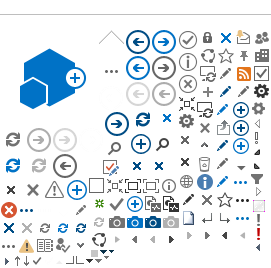Mobile Tracking of Interactions with Unsheltered Populations
What is Mobile Tracking of Interactions?
A technology-based solution to collect data and track homeless encampment activity along rights-of-way to help DOT agencies respond safely and proactively.
[CLOSE]
More about Sandwich Plate System Bridge Decks
The Sandwich Plate System (SPS) technology has been developed for the heavy civil engineering market and consists of two steel plates bonded to form a sandwich with a compact polyurethane elastomer core. The elastomer provides continuous support to the steel plates and precludes local plate buckling and the need for stiffeners. The flexural stiffness and strength of the sandwich plate is tailored to meet particular structural requirements by selecting appropriate thicknesses for the sandwich elements. The SPS Bridge Deck product has been used successfully as an alternative to conventional concrete and orthotropic steel deck.
Innovation Description
For many years, DOT staff have interacted with unsheltered populations, typically when the populations are encamped on or near DOT rights-of-way. While there are many issues related to encampments, the safety issues inherent to potential interactions between DOTs and these populations are of greatest concern and require accurate reporting and supervision.
Since 2014, MnDOT staff have collected data on staff interactions with unsheltered populations within the transportation rights-of-way, but the information collected and displayed was limited. The information was stored in a spatially-legible format, which was sufficient for printed summary maps, but offered few options for more in-depth analysis or the recording of detailed on-site conditions and statistics.
Specifically, staff needed an integrated and flexible data framework to:
- Allow for real-time data collection by staff while in the field, to more accurately depict camps' locations and the conditions observed, and
- Expand the variables included in the dataset to allow for more thorough analysis of the camps' attributes and activities as well as MnDOT's response to them.
The resulting solution is a mobile application called Live Unauthorized Encampment Collector. Staff use this to capture real time data, including arrival/departure time stamps; counts of camp residents, needles, Narcan kits, other drugs or weapons, propane tanks and other objects; outreach requests; and law enforcement requests. An online data sharing tool and time lapse analysis created in ArcGIS Pro 2.7 was developed simultaneously to allow for 3D views and time lapse analysis.
In addition, MnDOT has developed materials to ensure consistent and fair enforcement of roadside encampments. One of these is an 'Encampment Procedures Guide' detailing when and how encampment removal and clean-up should occur and how staff should operate in and around encampments. Another is a seven module video series for general field staff, instructing them of what to be aware of around encampments and how to interact with camp residents
Resources
Contacts
Peter Morey
Roadway Data & Support Director
Minnesota Department of Transportation
Phone: 651.366.3872
Email:
peter.morey@state.mn.us
Galen Sjostrom
Unauthorized Encampment Mobile Application
Phone: 651-234-7946
Email:
galen.sjostrom@state.mn.us
Kristie Billiar
Encampment Procedures and Policies
Phone: 651-366-3174
Email:
kristie.billiar@state.mn.us
Dewayne Jones
Field Staff Training Videos/Curriculum
Phone: 651-234-7944
Email:
dewayne.jones@state.mn.us

